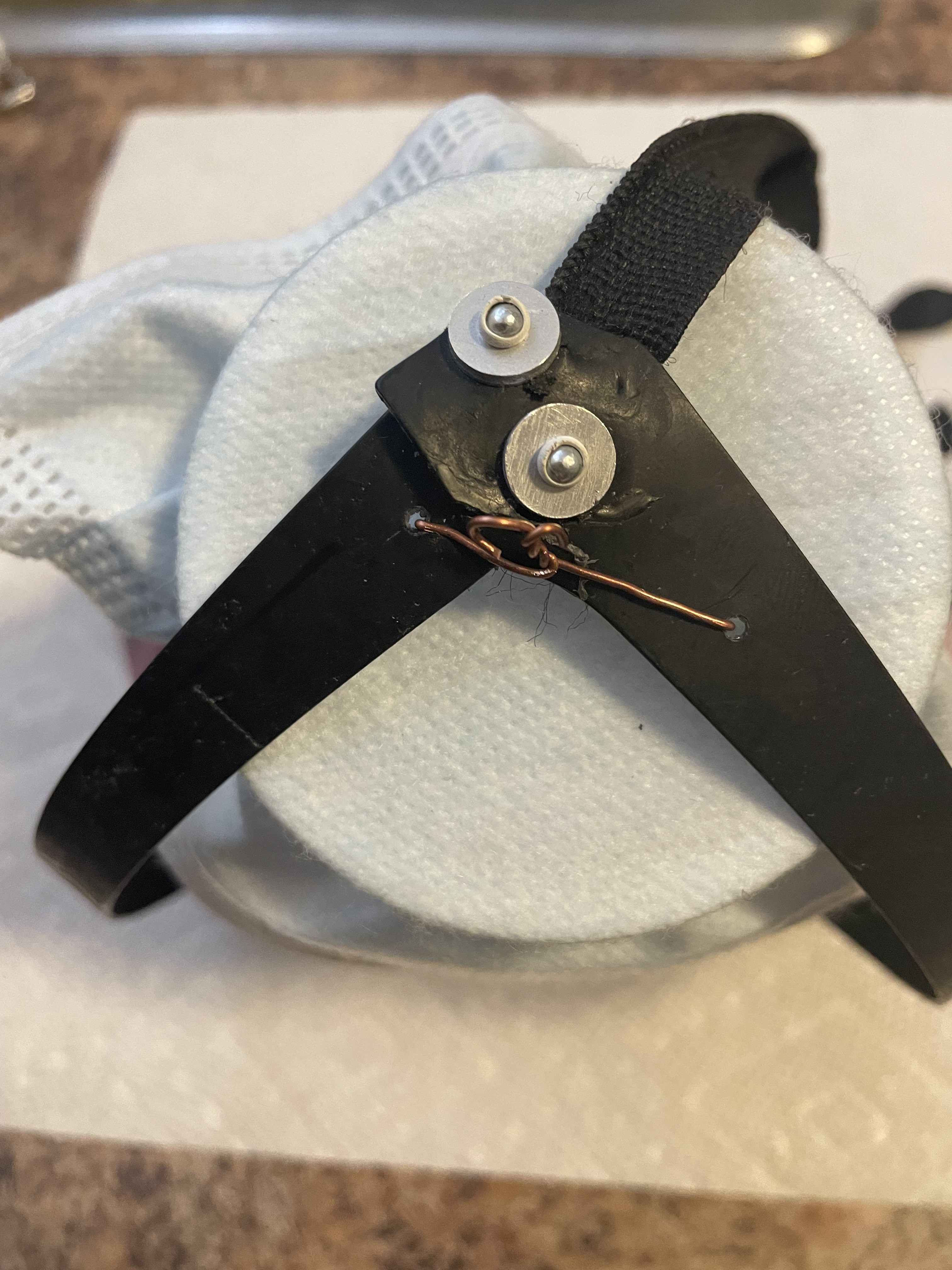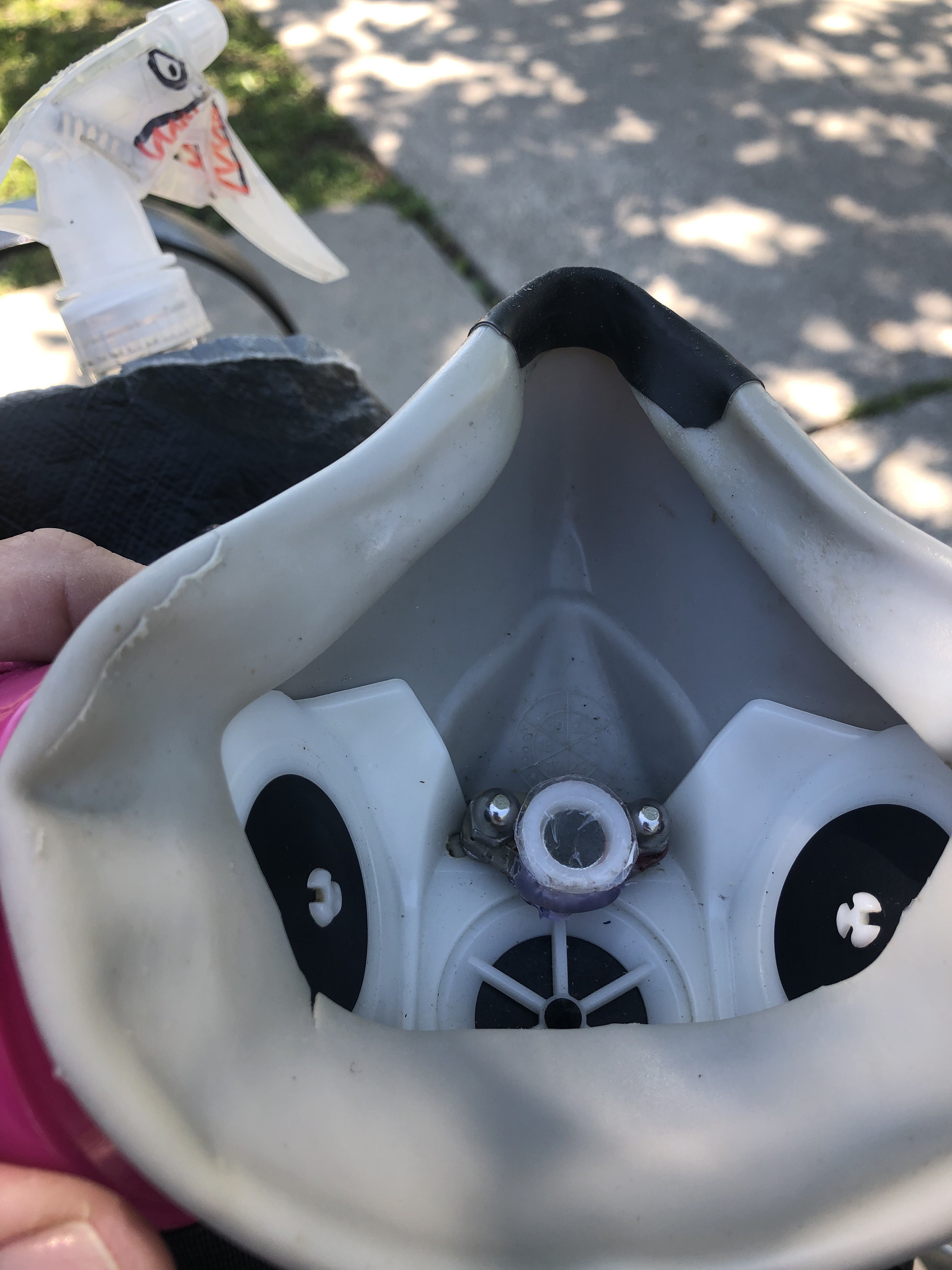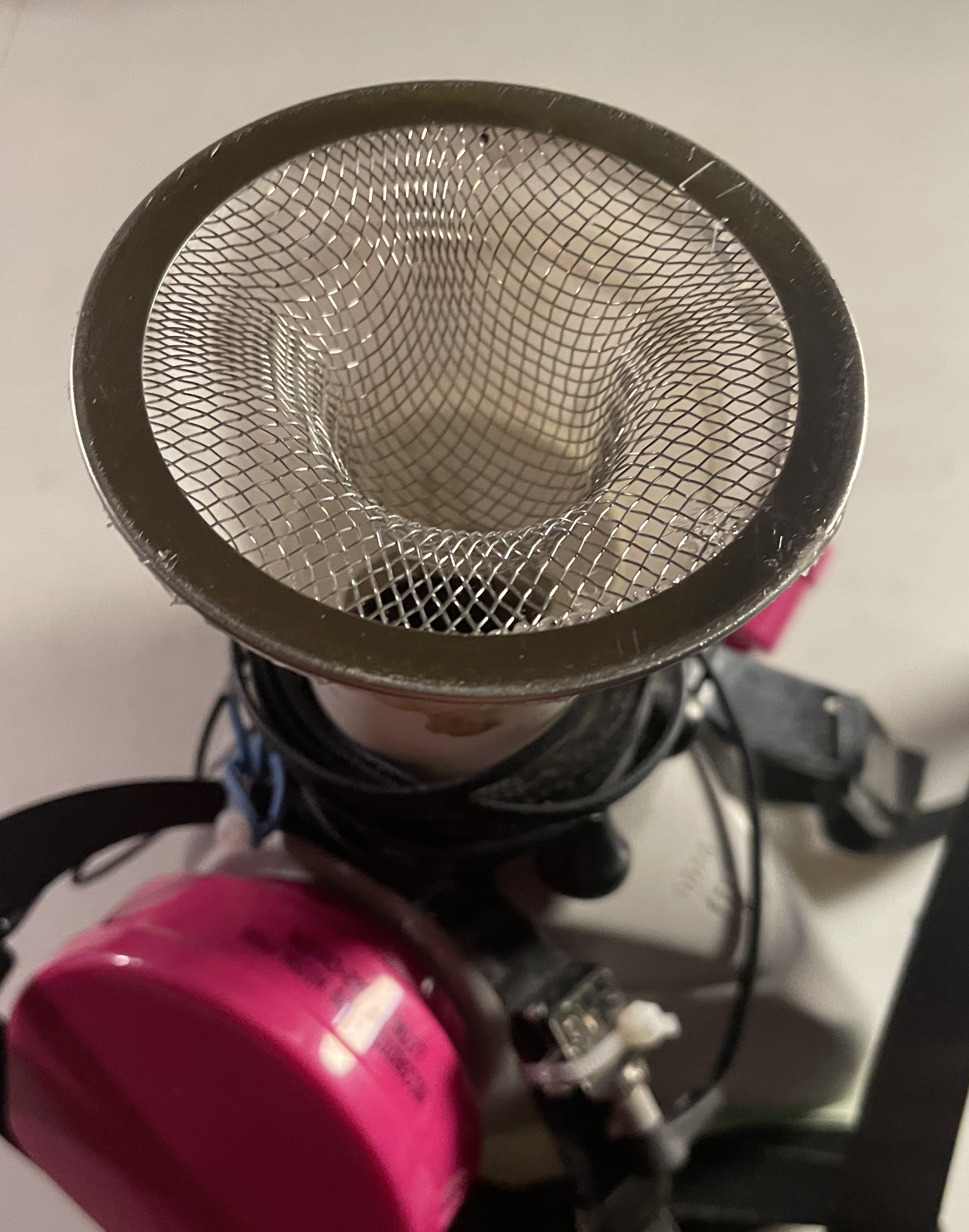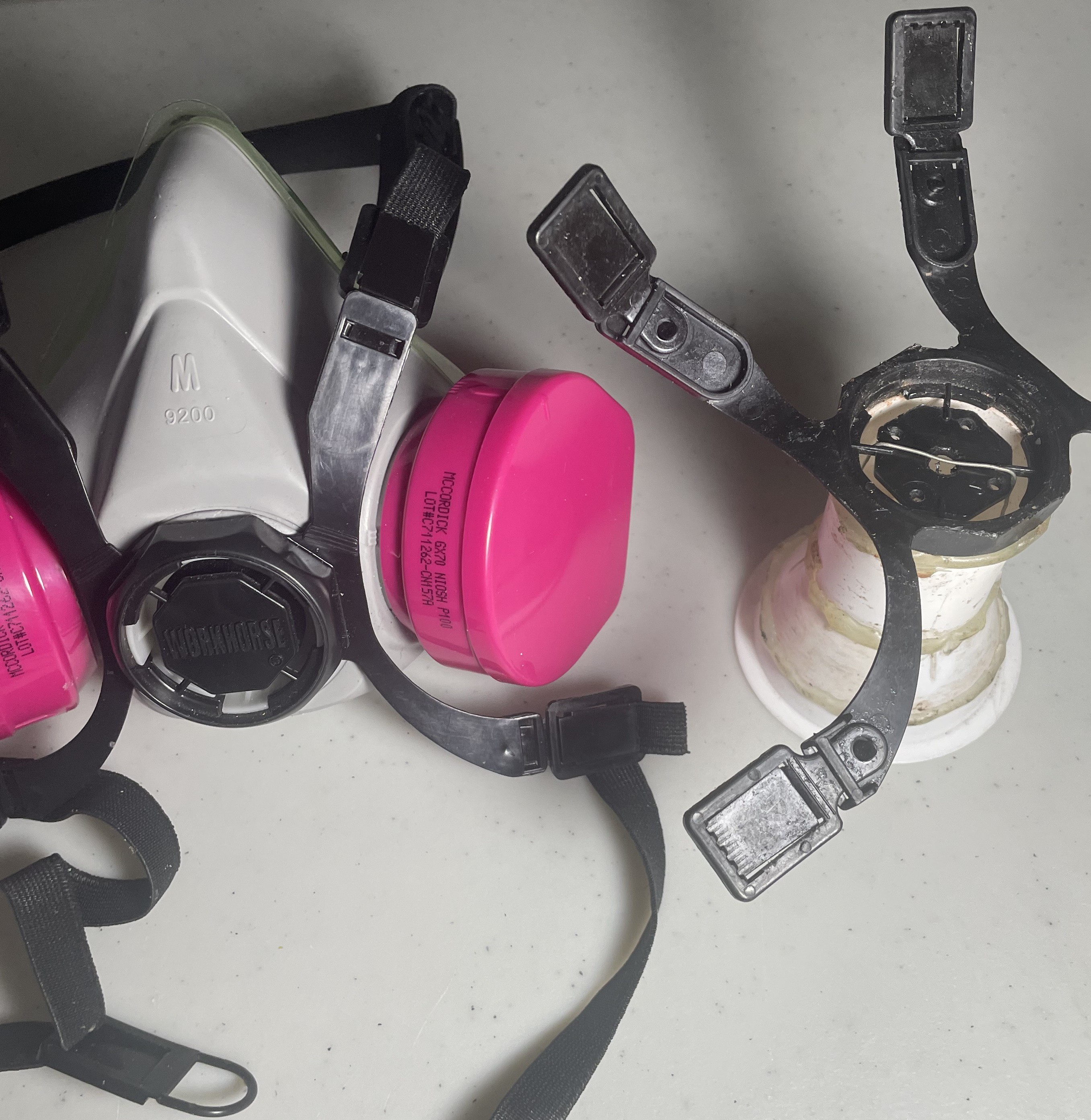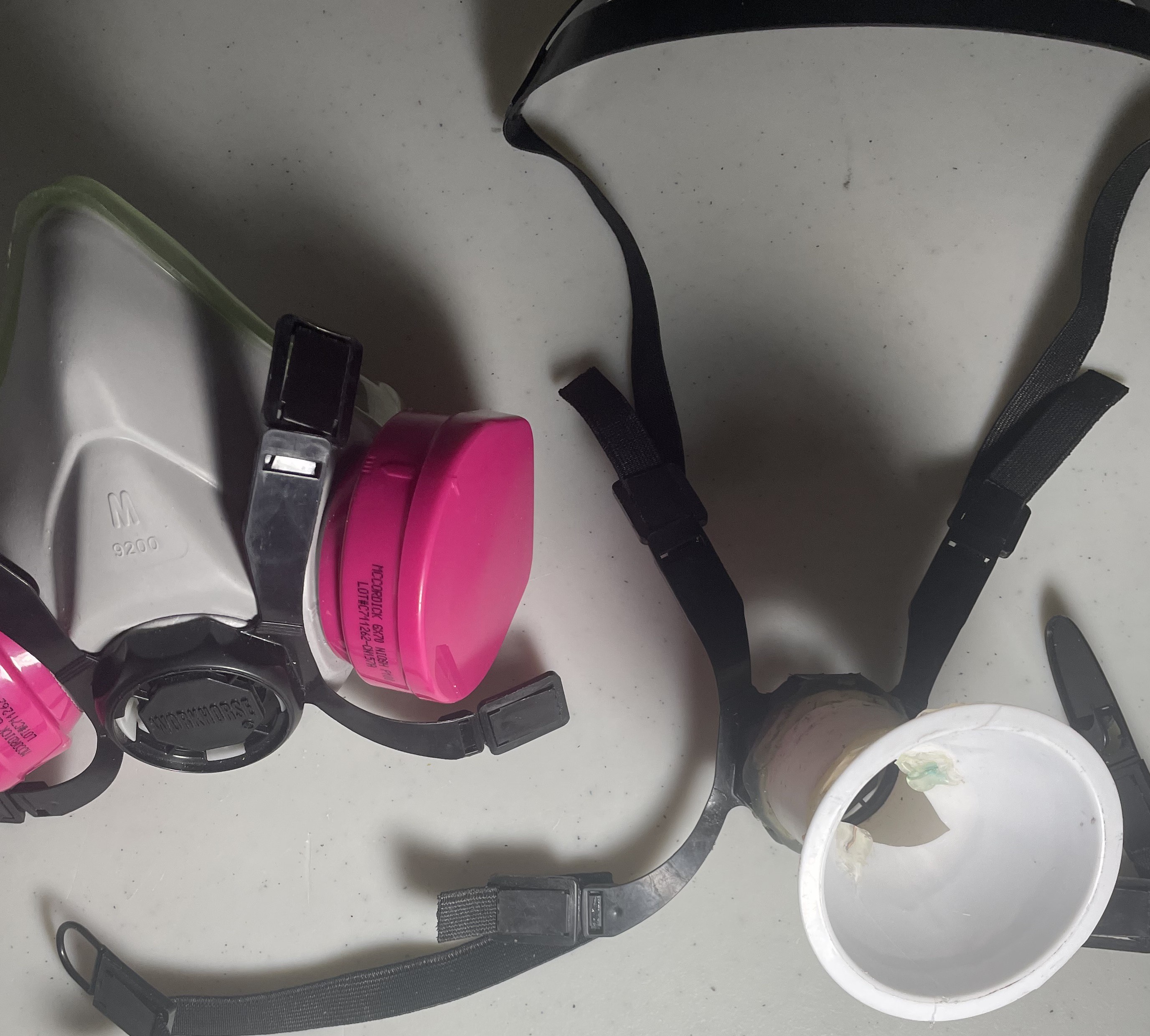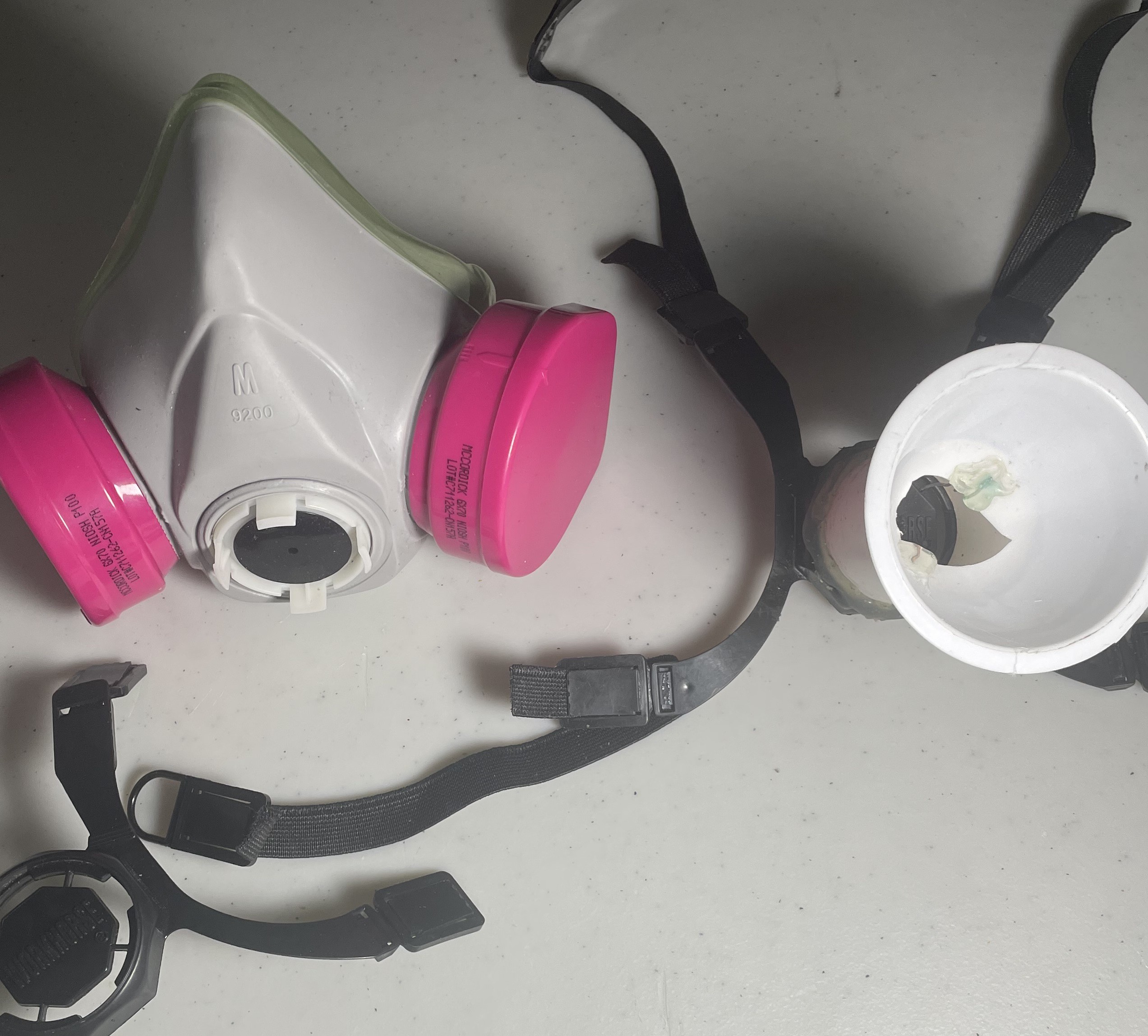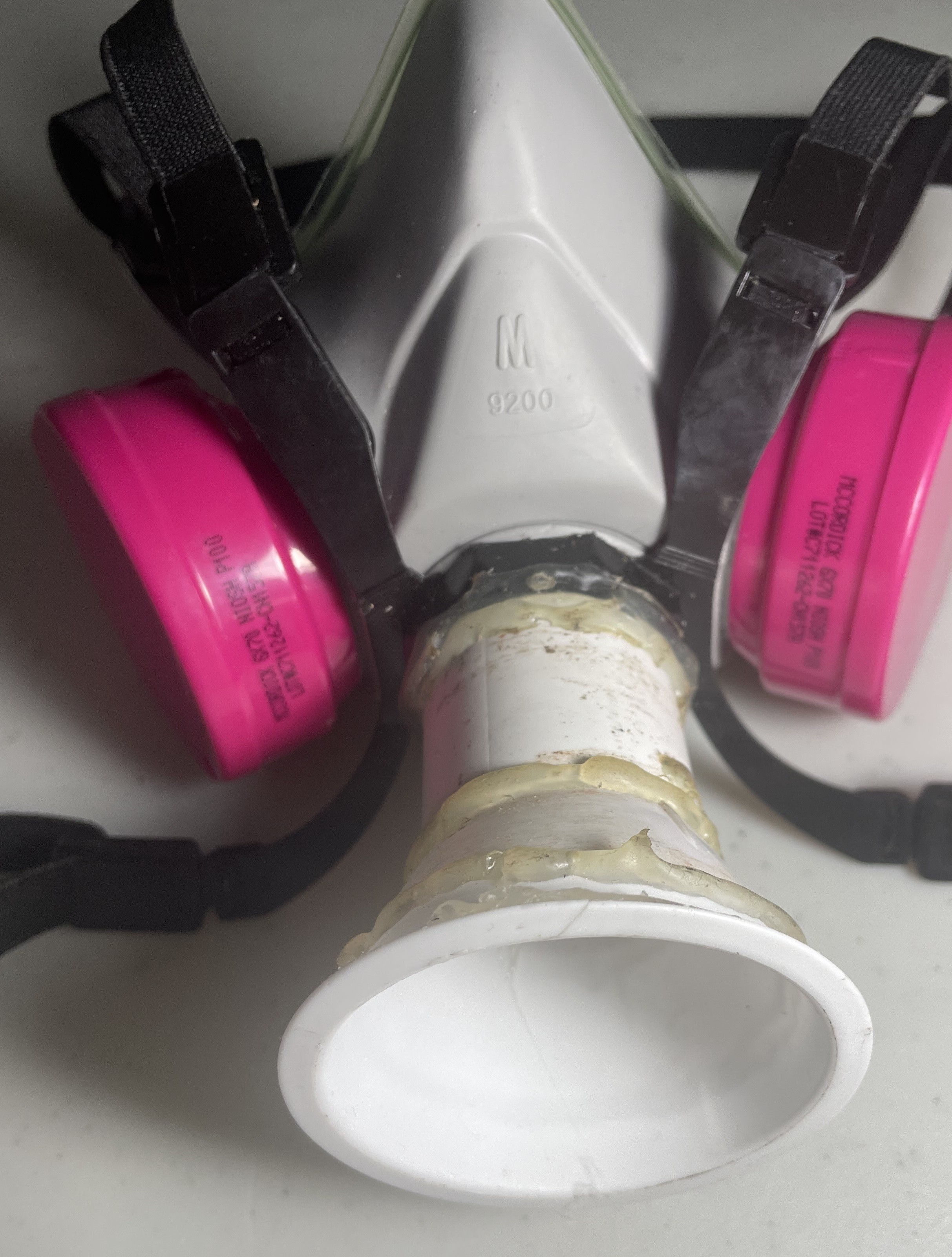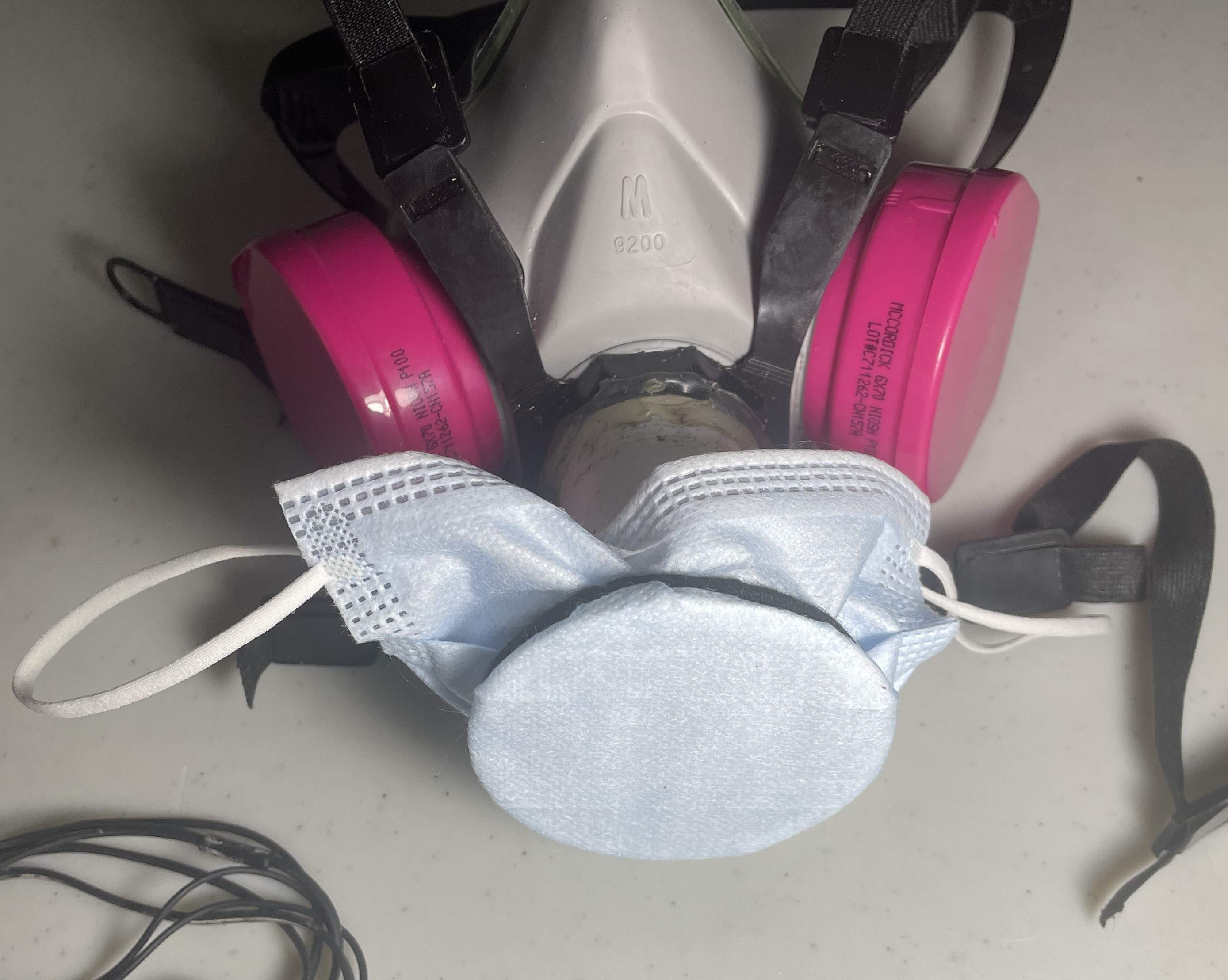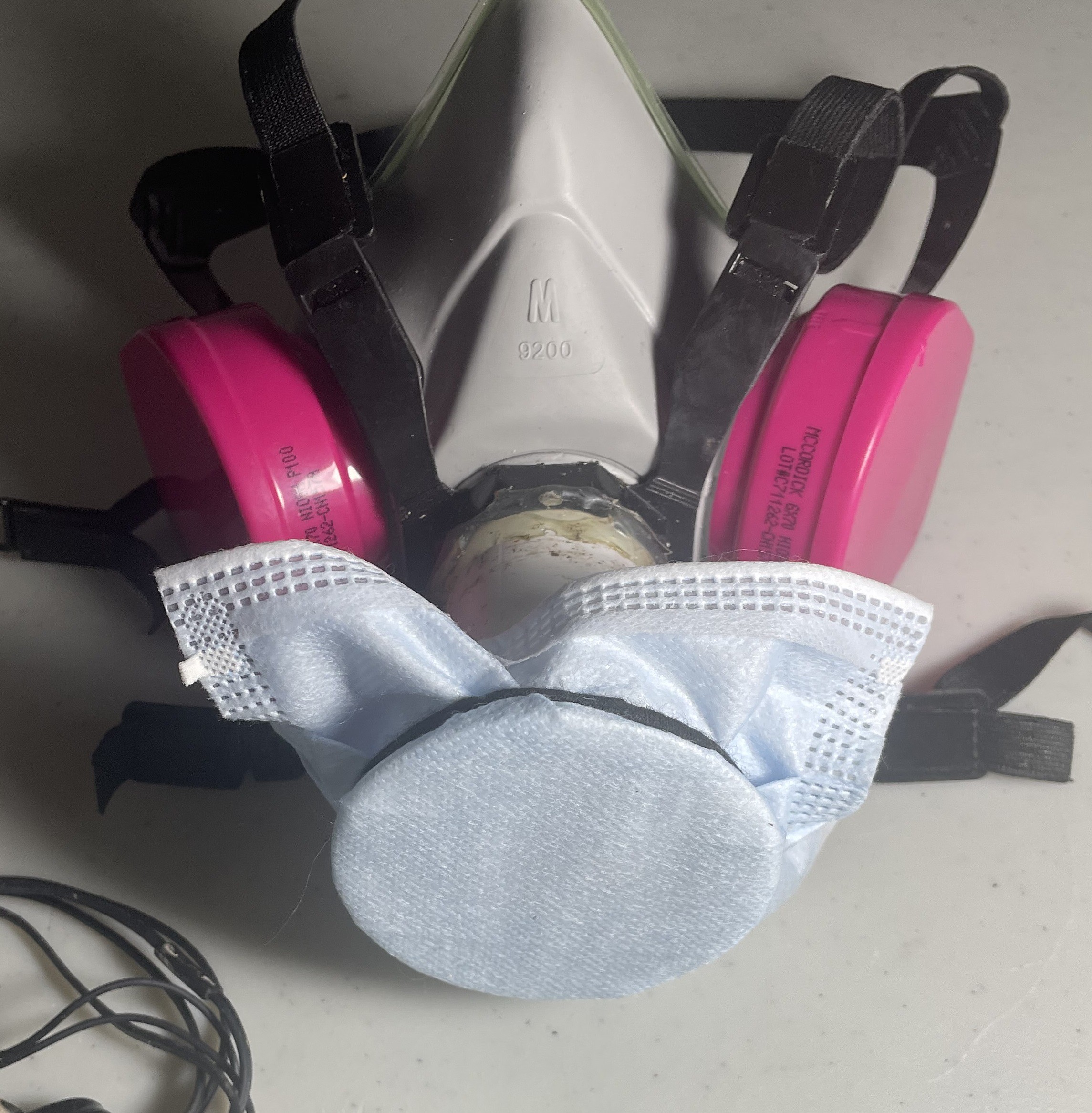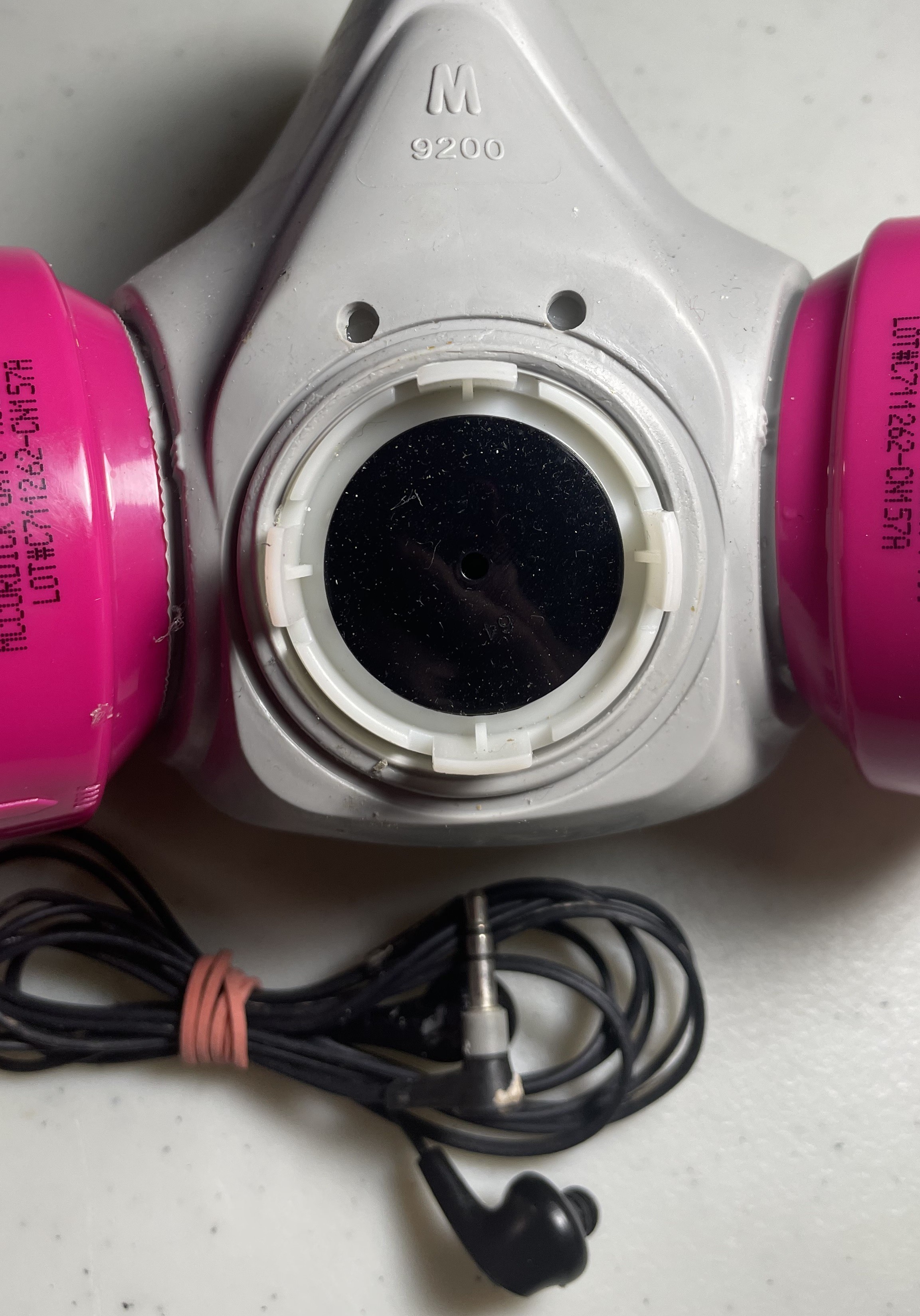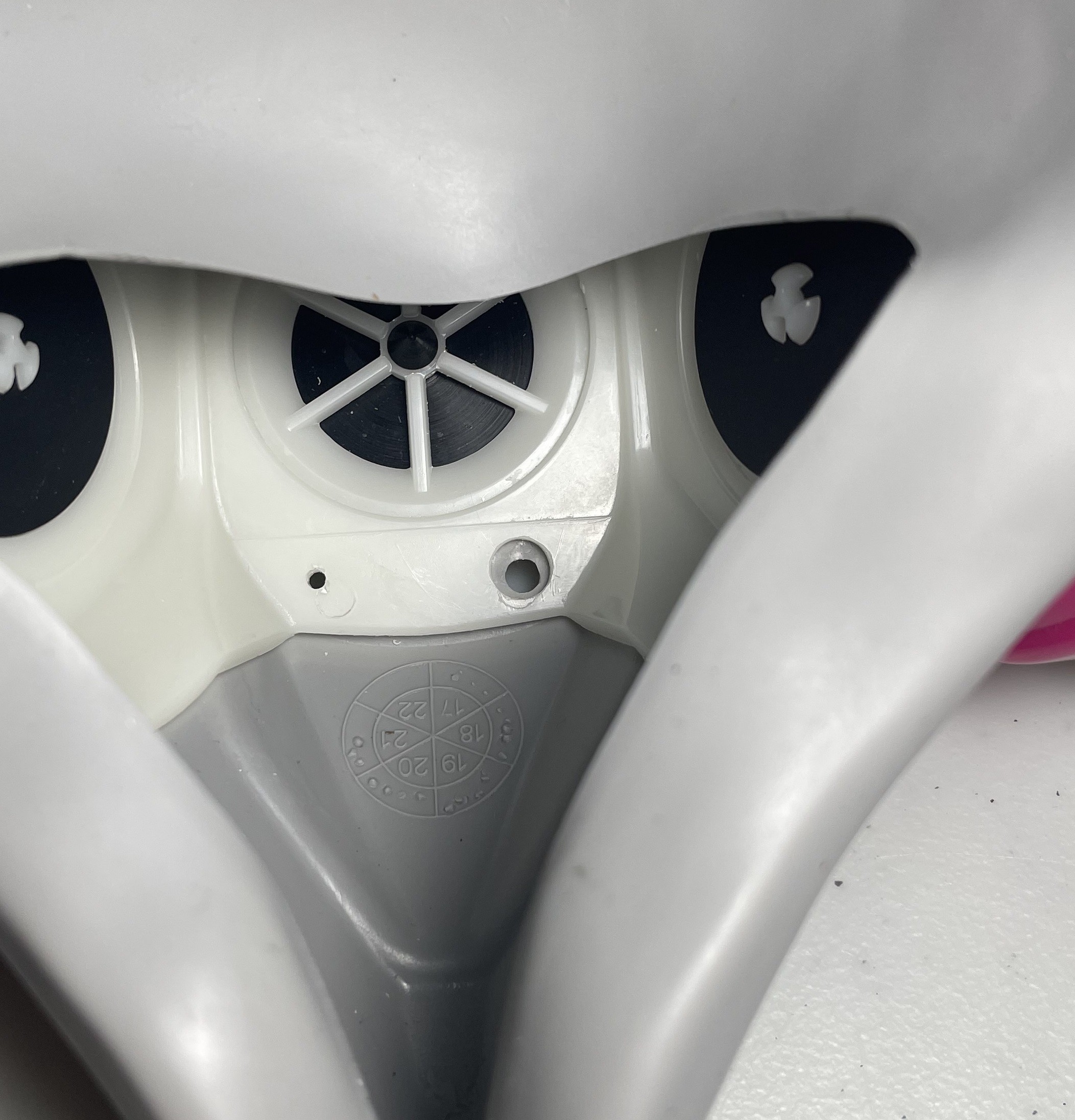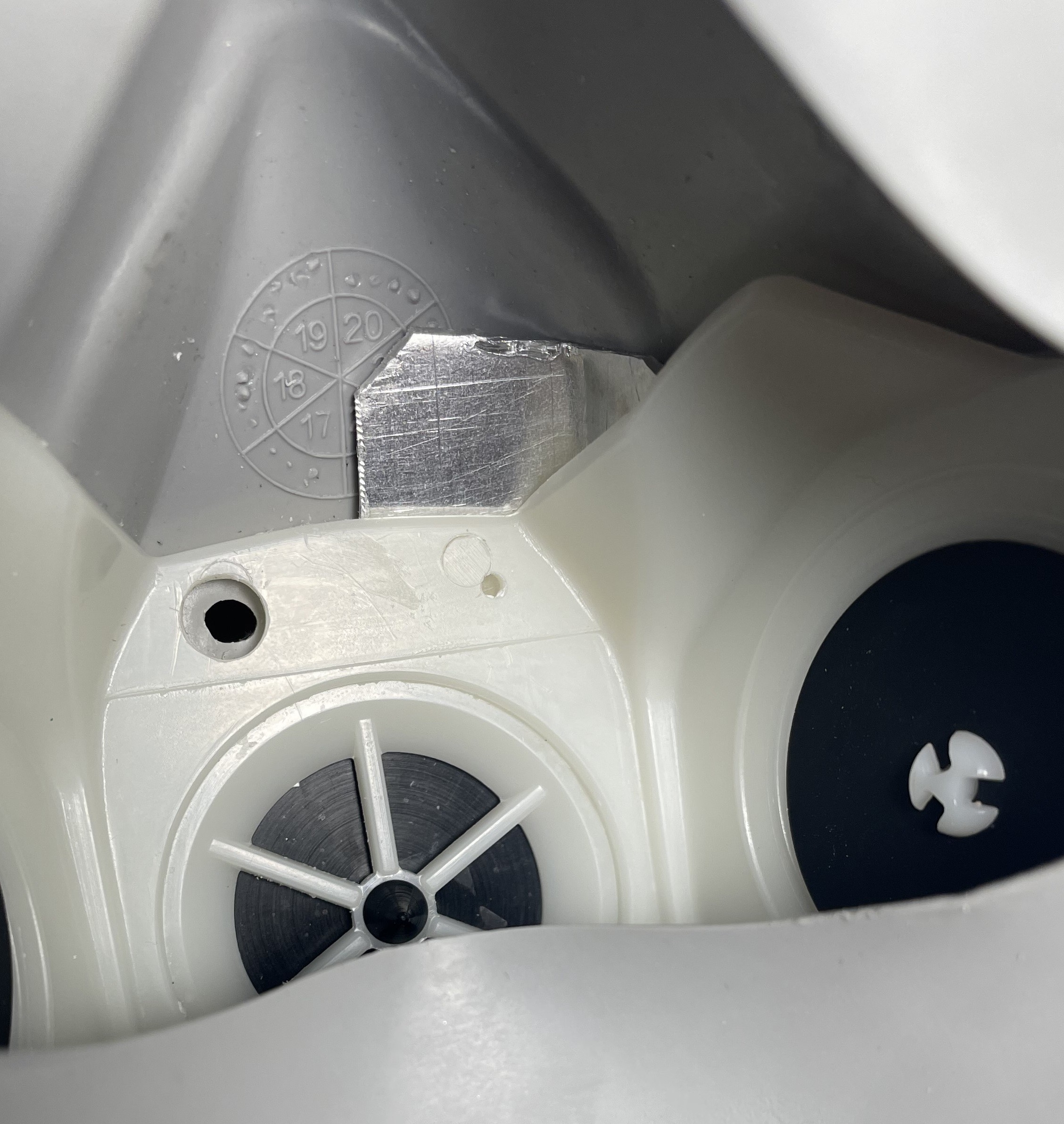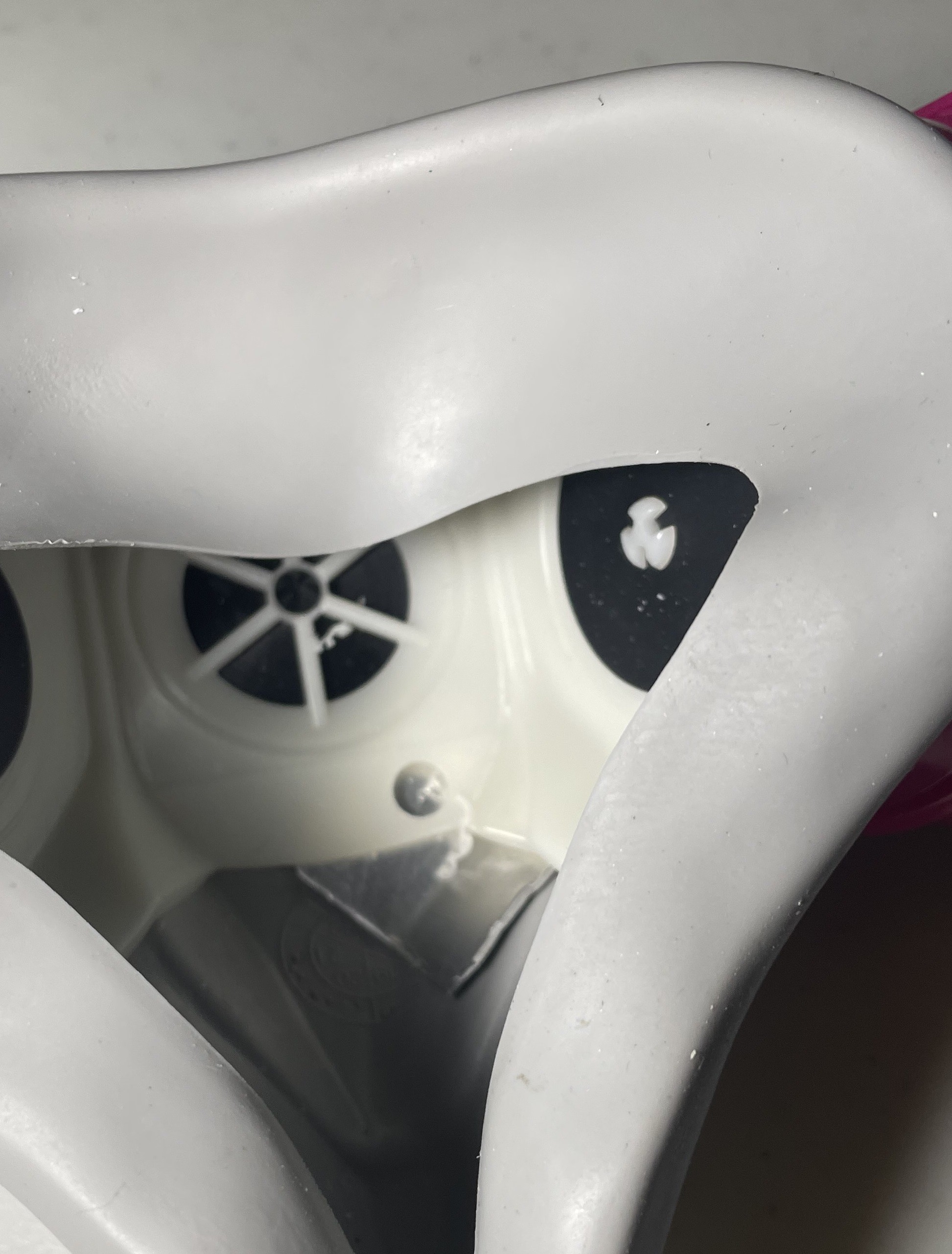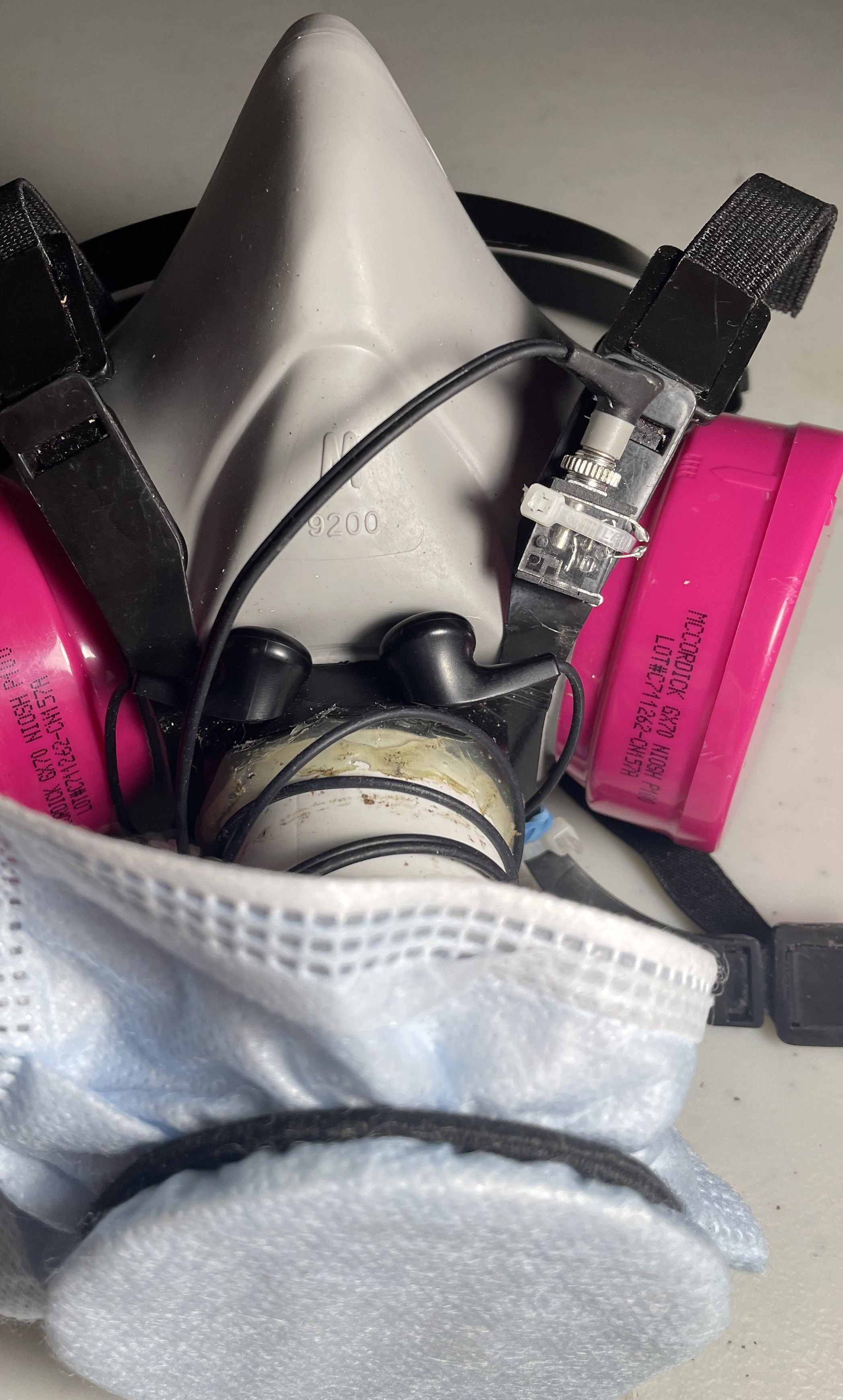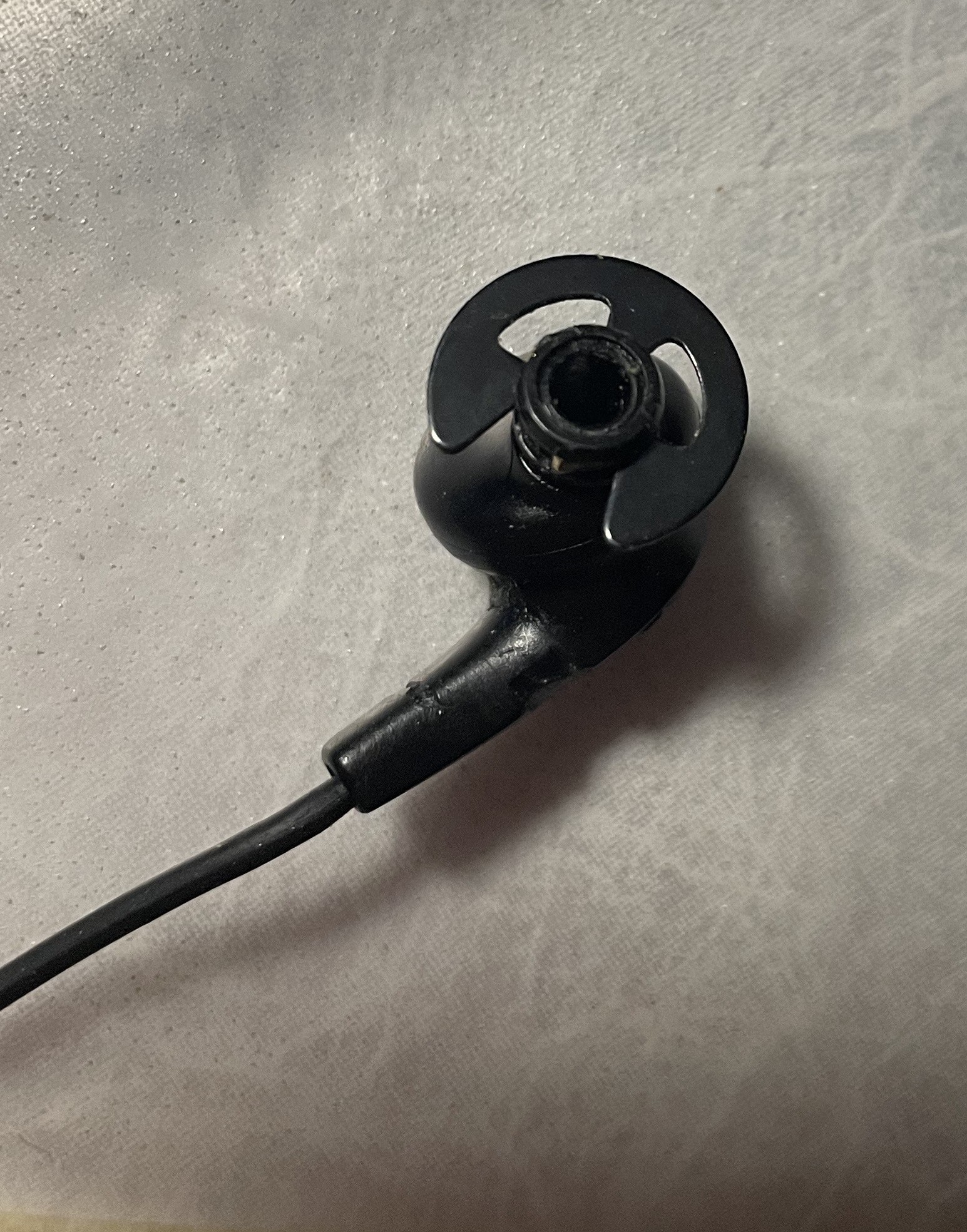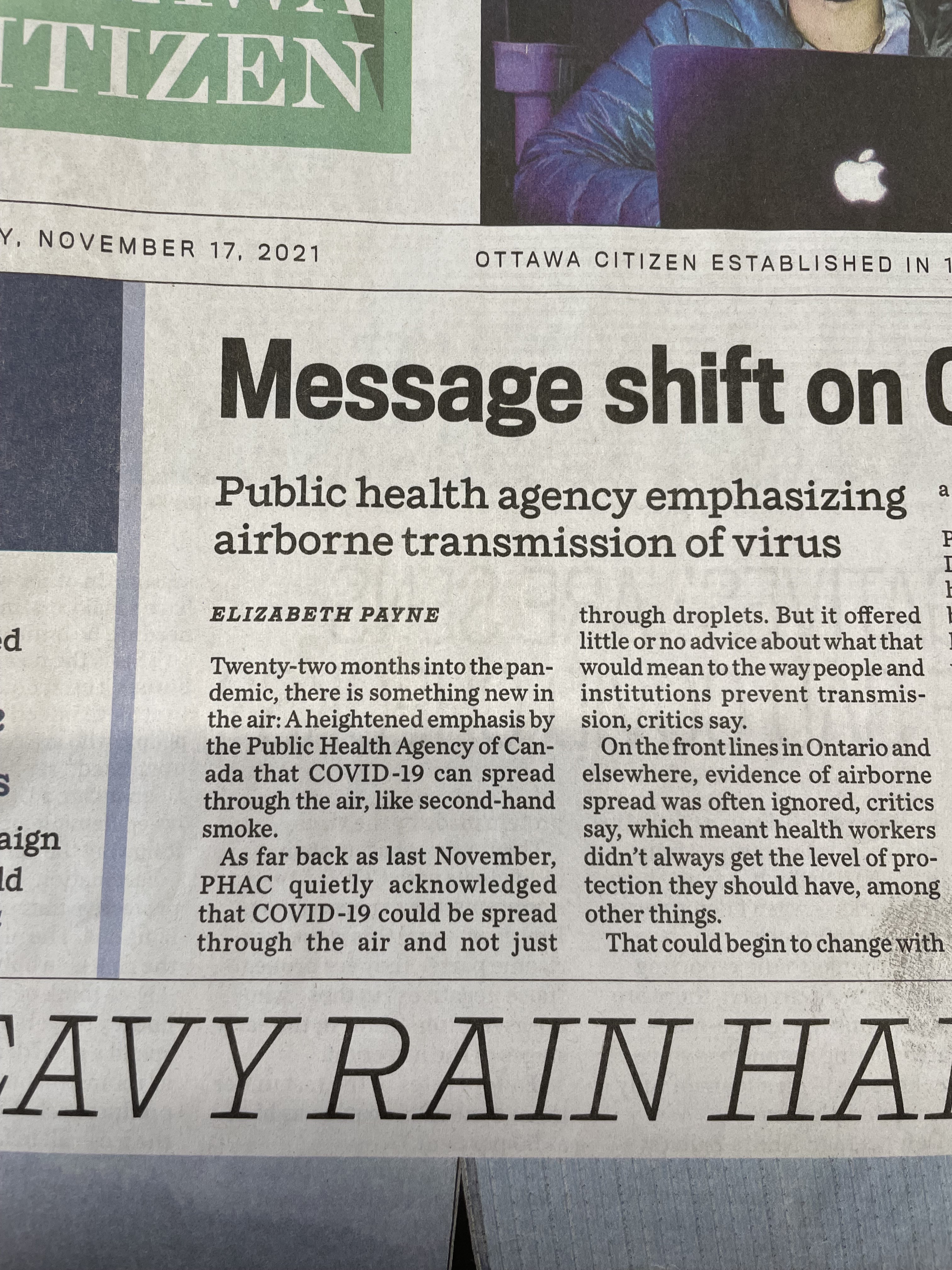-
Repairs
04/06/2022 at 00:06 • 0 commentsThe tweaking seems to have tapered off into maintenance.
The junction of the head strap with the elastic was a weak spot and this is how I rescued it using two pop rivets, four washers, and a twist of copper wire. I think I wrecked it by trying to put the head strap on over a hat, so I won’t try that again. A patch on the mask made from a neoprene glove and a tire-repair kit. It's looking like I can repair holes in the mask with a tire repair kit, but not the dry-repair kind: tire-repair rubber cement seems to be required (I used "Certified" brand). For intensely curved areas, a piece of black neoprene rubber seems to work as a patch; tire-repair patches are way too stiff for these areas. I just followed the tire repair kit instructions. My source of neoprene membrane was a "Gorilla Grip" glove, model C23403. Use a generous amount of glue. After the repair, consistently performing a suction and pressure test upon donning the mask becomes doubly important. This repair lasted one month in midsummer with frequent outdoor use, then the patch had to be pulled off and replaced. Solar ultraviolet seems to kick hell out of elastomer, some types worse than others. Of course, this summer I am applying sunscreen spray to the mask, so we’ll see how that goes.
Oct. 03, 2022: no deterioration noted, but I did not use the mask much this summer. The sunscreen leaves the mask feeling slimy and it picks up dirt easily. Am looking for a tough UV barrier layer that sprays on and dries non-slimy.
Inspect the mask for damage periodically, with disassembly, to ensure that no unfiltered air is leaking in or out. Places I have found damage: the rim of the funnel and the seals of the inlet filters.
Since the funnel rim was breaking, I reinforced it by hot-gluing it to a sink strainer, as shown below. The parts to be joined were roughened with sandpaper, then cleaned with a paper towel moistened with Varsol. I cut off any glue that extended beyond the strainer to prevent future air leaks.
To replace the P100 component altogether, follow this sequence:
Remove the filter holder with a screwdriver, remove the straps, and make any necessary repairs with hot glue after roughening the work area and cleaning it with a paper towel moistened with Varsol. The new P100 is on the left. (Aside: during everyday use, affix the hard, green plastic facepiece-protector after using the mask, per manufacturer's instructions.) Transfer the new straps to the old holder. Remove the new exhalation valve protector by prying with a screwdriver.
Press-fit the old filter holder to the new P100. Affix the fabric filter of your choice to the filter holder using a hair elastic. Cut off the straps of the fabric filter so they don't get in the way. This will restore basic functionality; the procedure for drilling/punching the sound holes follows.
Summary:
- outer sound-hole dia. (in elastomer): 5/32"
- The outer hole touches the outer ring-indentation you will find molded into the mask, along a radius of a corner of the valve protector.
- inner dia. (in nylon): 0.25"
Make the outer holes with a sharp punch, twisting instead of hammering. Insert an awl through the outer hole, with centering, and centerpunch the nylon. Then drill a 5/64" hole, diameter not critical. (The right side is at a more advanced stage.) Insert a custom aluminum plate to protect the elastomer during drilling. It had a tendency to slip away during drilling. Late idea: use a washer--as wide as will fit--with a bolt through the middle that goes through the hole in the elastomer to keep the washer in place. Drill the nylon in stages up to a diameter of 1/4", ensuring that no twist drill is dull. Leave no turnings trapped under the elastomer. Here is the finished renovation. During final assembly, the filter holder was pared down a bit at the base to provide improved clearance for the earbuds, using an Olfa knife. A new feature was added: a mono mini jack was zip-tied to the mask to provide a convenient place to park the end of the earbud cable when not in use. The stem of the filter holder acts as a bobbin for winding up the cable. Not visible: a notch was filed into the far side of the plastic below the jack to provide a place to seat the zip tie so that it does not slip. Not shown: attaching the strain-relief elastics. The only change there is that there will be no elastic on the plug.
Something to try: use a 5/32” dia. E-clip applied on the inside of the mask to stabilize an elastomer-only mount of the earbud. The earbud stems appear to have the necessary grooves already. The final picture shows an earbud with an E-clip attached. (The E-clip fits 13/64" dia. and the earbud groove has been fattened up to make it fit using a piece of 3/16" OD dia. brass tubing 1/16" long and opened with wire cutters.)
-
"Supplementary Data"
12/29/2020 at 18:51 • 0 commentsEnsuring a good fit:
In occupational settings, the all-important fit of the mask to the face must be professionally tested before use and every year thereafter. Here is another link re fit testing (both last accessed 02-06-2021). I got my present mask at a hardware store outside of an occupational context but did a DIY fit test with powdered stevia sweetener puffed out of a rubber bulb just after giving the bulb a good shake. The stevia seems to lose its sweetness slowly after removal from the packet, so I grind it fresh for each test. Will try saccharin next. (02-20-2021: saccharin test passed, but self-administered.) NB: I have two years of experience in wearing a respirator occupationally. If you are new to this, you should practice a lot in a safe setting until you know what a good and bad face seal feel like and the moves you need to get a good one.
My big discovery was that moving the mask up or down on my face often did the trick. If that didn't work, the straps were either too loose or too tight. (Tight straps can distort the face seal.) In case of a seal problem, let the mask warm up on your face for five minutes before trying any adjustments.
I learned how to wear a respirator in a paint shop where there are smelly fumes that you can smell if they leak into your mask. This facilitated the learning process and I am not surprised that OSHA provides a smell option for fit testing involving water solutions of isoamyl acetate; using smell is so much more convenient than taste (no need for a "nebulizer" that often blocks up) and makes a more stringent and foolproof test because to pass, the mask has to keep out individual molecules, which are vastly smaller than the tiniest particles of concern in infection control. You just swap organic vapor cartridges for filter cartridges for the duration of the test, then swap 'em back afterward.
In cold weather, a mask leak can fog up my glasses and thus be detected easily if it occurs alongside my nose, which is a problematic area anyway. Fogged glasses can be good for detecting leaks.
11-18-2021: FYI
A P100 Mask Intercom
A conventional P100 respirator upgraded for use as COVID-19 PPE by the addition of an intercom and a means of exhaled-air treatment
 David Matthew Mooney
David Matthew Mooney